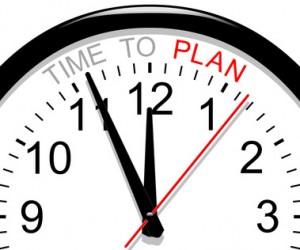 If you had to pick one quote that best reflected who you are, or what you represent, what would it be?
If you had to pick one quote that best reflected who you are, or what you represent, what would it be?
This was my challenge last week. I’ve been honored with an award*, and was asked to provide a bio and short quote for a poster the organization is preparing for the ceremony.
I recommend that everyone have a pre-written bio [see why in my blog post Four Ways to Use Your Qualifying Conversation], but it never occurred to me to have a quote ready.
It’s a handy exercise. In the end it came down to four choices.
This one gives me great solace and hope:
Never doubt that a small group of thoughtful, committed citizens can change the world; indeed, it’s the only thing that ever has.
-Margaret Mead
This is the one that tells you the most about me:
The mountains are calling and I must go.
-John Muir
I like this one for its pragmatism:
You can have it all, just not all at the same time.
―Betty Friedan
Because it needed to be short, and I wanted something more hopeful than the previous quote, this is the one I chose:
There is more to life than increasing its speed.
-Mahatma Gandhi
I like it because it helps reinforce my message that one of the benefits of managing your time is having time for yourself, your family, friends, and hobbies.
Do you have a favorite quote? Share it below in a comment. What do you think it says about you?

 Dealing with email is one of the top complaints I hear from my clients. Gmail just came out with a terrific update that I love! It automates what I was doing manually by creating filters (similar to rules in other email programs), and you know how I love automation! Even if you are not currently using Gmail, watch their short video for ideas on how to streamline your own email overload. If you like what you see, remember that it is easy to forward your email from Outlook or another email provider into Gmail. That’s what I do. I explain how in my Inbox Simplicity program.
Dealing with email is one of the top complaints I hear from my clients. Gmail just came out with a terrific update that I love! It automates what I was doing manually by creating filters (similar to rules in other email programs), and you know how I love automation! Even if you are not currently using Gmail, watch their short video for ideas on how to streamline your own email overload. If you like what you see, remember that it is easy to forward your email from Outlook or another email provider into Gmail. That’s what I do. I explain how in my Inbox Simplicity program. Support systems are important in our personal lives, too. Here’s a post from 2009 that’s illustrates why.
Support systems are important in our personal lives, too. Here’s a post from 2009 that’s illustrates why. Some things are just so simple you wonder why no one thought of it before. In the article below, a surgeon talks about the complicated process of keeping patients alive and shares his simple solution for how that process might be streamlined. It’s easy to find applications for your business.
Some things are just so simple you wonder why no one thought of it before. In the article below, a surgeon talks about the complicated process of keeping patients alive and shares his simple solution for how that process might be streamlined. It’s easy to find applications for your business.